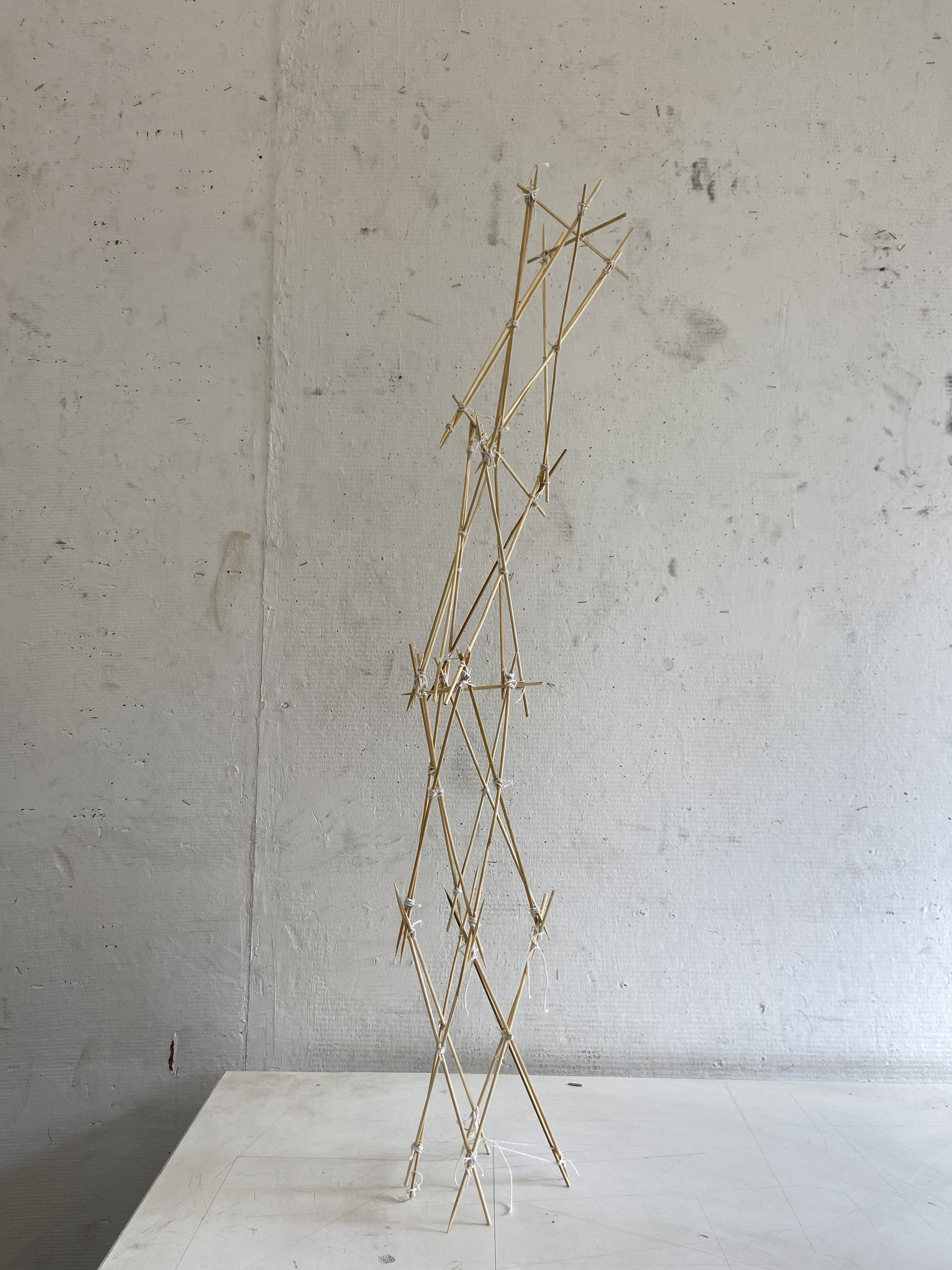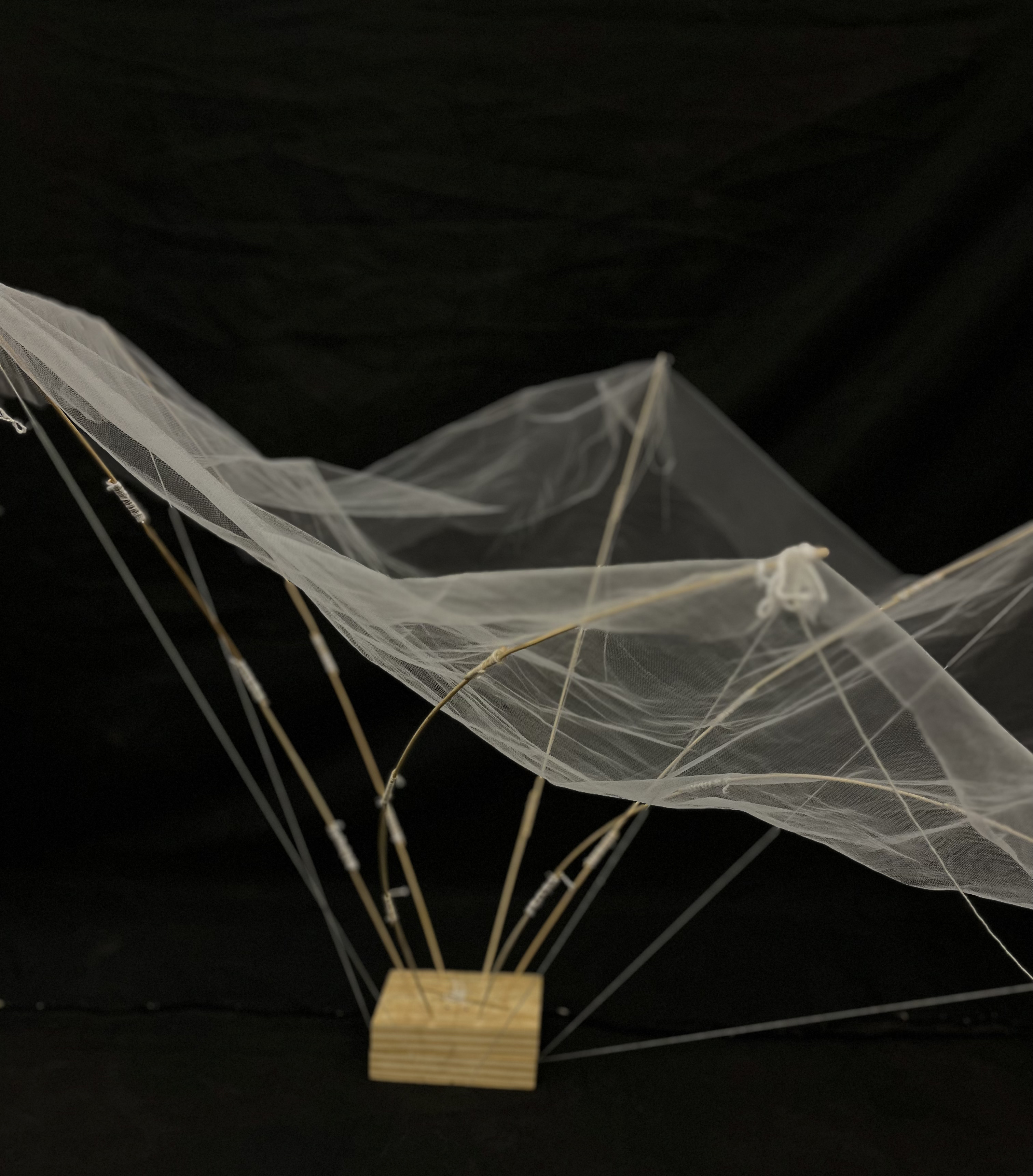Sem 02 / Material Systems
Dushyant Asher
The course explored the relationship between material-force-geometry through material systems that balance and contain forces. The systems responded to internal forces of the system through material configurations, and then expanded to balance itself with the forces of gravity.
The studio prompts were to explore forces that configure itself as a play between mass+suspension, interlocks, diagrids, tensegrity/tensile, friction and stacking. Based on such above prompts, the students selected materials from their own domestic contexts and of a particular material properties that could configure systems that could span, go tall, and spread across a distance of 1 meter. This exercise helped them get a physical and intuitive sense of forces at a 1:1 scale. The 1 meter models discovered the forces and its extents at which it could put together a balanced system by carefully tweeking and refining and optimising the parts of the system configurations.
The second part scaled up the small model, to make and design for a small canteen pantry and seating spaces around. The earlier systemic material configurations then were mobilised as material diagrams for them to think of large built forms. The forces in the system worked on a diagrammatic level to then articulate further with building materials like bamboo, brick, wood, metal sheets, fabrics, and other such materials. These focused on a part enclosed space and part open to accomodate the pantry and seating areas.
The outcomes were of varied configurations that used details of wood and bamboo, brick and stone and cables and fabrics and metal sheets.



Lavanya Mejaree

Aditya Gupta

Ronit Daga + Eesha Waingankar

Heena Velhal

Nirav Chougule